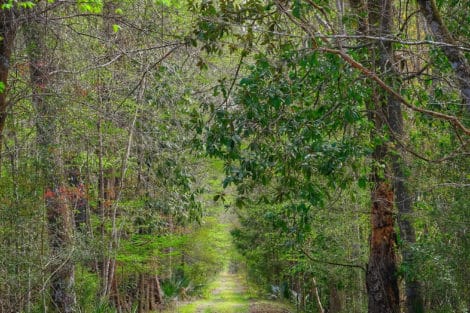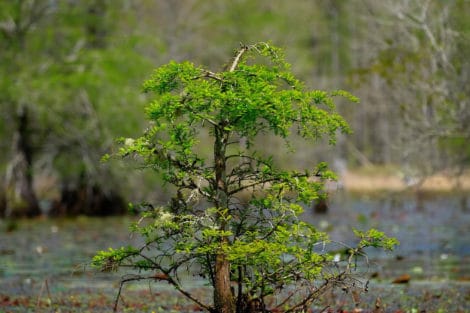We live in a world where environmental consciousness has become so mainstream that it is now a selling point for many everyday products. Given a choice, consumers will tend to purchase a product labeled as being sustainably sourced or made from natural or recycled materials versus a traditional competing product. Sometimes, they are even willing to spend a little more to purchase the environmentally friendly option. When it comes to land, people have the same mindset. Most would agree that it is vital to prioritize environmental conservation to ensure many of the natural resources near and dear to us are available for our children and their children to enjoy as well.
As populations continue to grow, new developments are inevitably required to meet the needs for new jobs, homes, schools and roads around the most economically prosperous regions. The resulting urban sprawl will always pose the biggest threat to rural/recreational lands. Fortunately, there are regulatory checks and balances that encourage and often require developers to make environmentally conscious decisions before they are allowed to turn any dirt on a new project.
One of the most effective methods of controlling unbridled development and promoting conservation efforts is requiring developers to offset losses of any sensitive environmental resources associated with a project through ecological credit trading programs referred to as mitigation banking. Perhaps the most common of these programs, especially coastal plains and across the southeast, is wetland and stream mitigation.
What is mitigation banking?
Large-scale wetland and stream restoration and enhancement projects are established in areas where continued development will require impacts to these important aquatic resources. The restoration work completed at a mitigation bank generates a net gain of wetlands and/or stream in a given area, which is quantified based on the resulting ecological benefit to generate a number of mitigation “credits” and the site is protected in perpetuity, typically via establishment of a conservation easement. The mitigation bank owner can then sell those credits to a developer whose project is impacting those types of resources elsewhere in the same or adjacent watershed.
How is mitigation regulated?
The technical aspects of mitigation banking are mostly regulated through the US Army Corps of Engineers (USACE) since wetlands and streams are largely considered as Waters of the U.S. and subject to federal jurisdiction, with state agencies being involved to varying degrees depending on that state’s policies on aquatic resources. These agencies provide guidance, authorize establishment of and certify compliance of mitigation banks within their jurisdiction to guarantee that the restoration and enhancement efforts associated with a mitigation project are carried out successfully before credits are released to be sold.
Development projects that involve wetlands and/or streams impacts require permits from the applicable regulatory agencies before construction can begin. The agencies ensure impacts are offset by requiring a developer to provide mitigation for loss associated with a project through a special condition of the permit. Per the condition, the type of mitigation must be “in-kind” and the number of credits required, based on the size of the impact, must be purchased before a permit is considered to be fully authorized. Each regulatory district has a set of approved worksheets that are used to calculate the number of credits a bank generates and credits required for project impacts, serving as a basis for ensuring that the improvement each credit provides at a bank is equal to (or greater than) the loss associated with each credit required for a given project.
What does all of this mean for private landowners?
While the technical aspects of these ecological credit trading programs are highly regulated by the federal, state and sometimes even local agencies to ensure successful implementation of the overall goal of achieving a zero net loss of important resources, the business side of the industry is mostly a free market subject to a simple supply and demand premise. This creates opportunities for an owner of property with the right combination of location and existing conditions to generate revenue from their land through a means which may not have been previously considered.
The question I am most often asked is “What makes a tract a good candidate for a mitigation bank?” While the answer is not simple, the characteristics I first consider are location, historic land use and size. Is a property located in or near an area expecting a lot of development in the near to mid-term future? Has the site been historically manipulated to dry it up (i.e. for timber or crop production) in such a way that it can be reversed to restore it to a natural, pre-anthropogenic condition? Tract size is important in that creating a mitigation bank can be a costly endeavor and a site must be able to generate enough credits to offset the capital costs of development and provide a solid ROI for the financially responsible party behind the bank project, known as the Sponsor. Although a target mitigation bank size can vary a lot by state, USACE regulatory district and whether it involves wetlands, streams or a combination of both, it is safe to say that a site typically needs to be at least in the 250 acre realm with perfect conditions to be potentially feasible; however, most banks are going to be closer to 1,000 acres and larger.
The road to development of a successful and profitable mitigation bank is a long and often arduous one, but for the savvy landowner (or investor), it can be both profitable and rewarding experience. Development of a mitigation bank can take two to three years and incur some substantial capital costs for consulting, engineering and construction, but most of the initial investment can be recouped through potential timber revenue and initial credit sales upon bank project approval. Depending on total number of credits a bank can generate and credit market, it can take anywhere between eight and twelve years to sell out all credits, but they will sell, and prices only go up over time.
While there are numerous variables that go into the business model for a mitigation bank, a successful project might yield a potential gross value of $12,000 – $15,000 an acre. Though the landowner is left with a property that has a restrictive conservation easement, they often can retain hunting and recreational access to the property.
With the right property, a landowner who is open to or interested in exploring alternative means of generating revenue from a property while contributing to conservation of natural resources, mitigation banking could provide a means of reaching those goals. For anyone who believes that they have a property with potential for wetland and/or stream restoration and is interested in learning more, I’d encourage you to reach out to a land manager or consultant familiar with the mitigation business, myself included.
Written by G. Alan Wood, PWS, a Mitigation Project Manager at American Forest Management with over 11 years’ experience in the environmental consulting and mitigation banking industries. Based out of the Charlotte, North Carolina corporate headquarters, he provides wetland and mitigation consultation services across the southeastern U.S. He is a Professional Wetland Scientist and is a member of the South Carolina Mitigation Association and Society of Wetland Scientists. Photos by Daniel Wood.
This content may not be used or reproduced in any manner whatsoever, in part or in whole, without written permission of LANDTHINK. Use of this content without permission is a violation of federal copyright law. The articles, posts, comments, opinions and information provided by LANDTHINK are for informational and research purposes only and DOES NOT substitute or coincide with the advice of an attorney, accountant, real estate broker or any other licensed real estate professional. LANDTHINK strongly advises visitors and readers to seek their own professional guidance and advice related to buying, investing in or selling real estate.













Add Comment